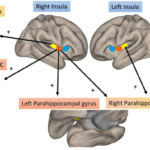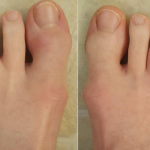
Phil Mickelson, shown here at the 2009 US Open, in Farmingdale, N.Y., announced in August 2015 that he had been diagnosed with psoriatic arthritis, drawing national attention to the condition.
David W. Leindecker/shutterstock.com
LONDON—Rheumatologists need to make the management of psoriatic arthritis (PsA) “a little more complex,” treating different tissues individually and doing more to help treat and prevent co-morbidities, an expert said here at the Annual Congress of the European League Against Rheumatism (EULAR) 2016.
Iain McInnes, MD, PhD, director of the Research Institute for Infection, Immunity and Inflammation at the University of Glasgow, reminded his audience during a scientific session that co-morbidities in PsA are all over the map, from cardiovascular disease to metabolic syndrome to gastrointestinal problems.
And it’s the responsibility of the rheumatologist to stay on top of all aspects of the health issues that can arise from the disease, even if they aren’t his primary field, Dr. McInnes said.
“It is our job as rheumatologists to at least entertain the thought that such co-morbidities should be, one, recognized and, two, treated,” he said. “Every patient that comes to our clinic in Glasgow has their weight measured and their blood pressure measured and I ask about both of those elements of their life.”
And talk is empty if it isn’t followed by action, he said.
“If I tell them that losing weight is important but I never measure their weight, it’s like telling your teenager to go and tidy their bedroom,” he said. “The one thing that isn’t going to happen is that their bedroom is going to be tidied.”
The link between PsA and other processes in the body is tied to evolution, he said. As an example, he mentioned tumor necrosis factor and serotonin. Before medical advances, in order to heal, people needed quiet places to sleep to build up enough energy for their immune systems to fight off illness. So it shouldn’t be too surprising to learn, as a paper showed earlier this year, that circulating TNF is highly correlated to the bioavailability of serotonin in the brain.1
“When a patient with psoriatic arthritis tells you they’re depressed—and by the way I would urge you to ask—they’re not telling you that they are only depressed about having the disease, which is an understandable reactive phenomenon; they’re actually telling you they comprise a biological syndrome whereby the brain and the peripheral inflammatory system are evolutionarily required to relate to each other and, therefore, unsurprisingly the patient’s syndrome comprises diminution of life satisfaction.”


